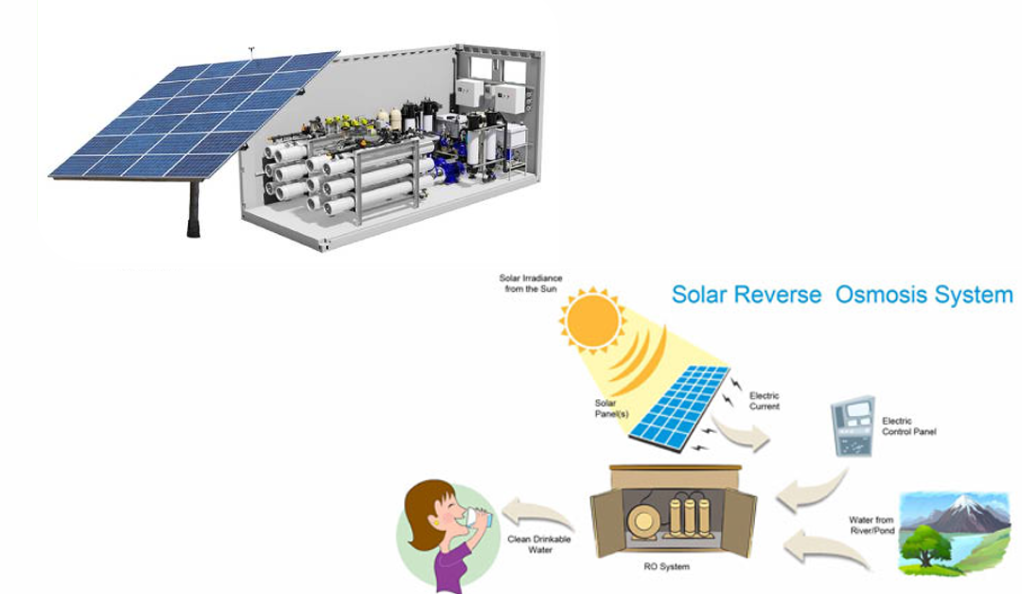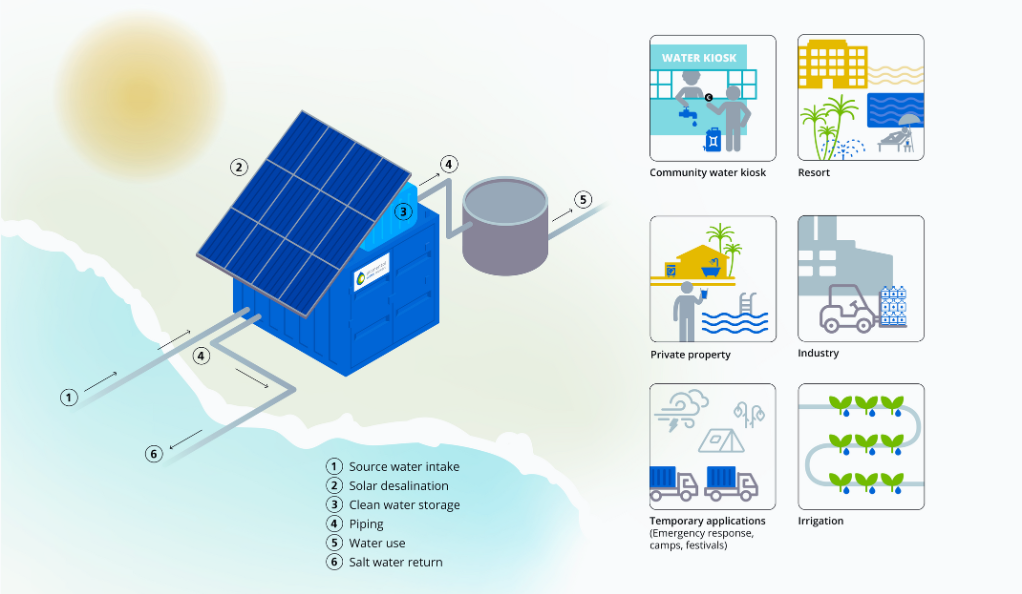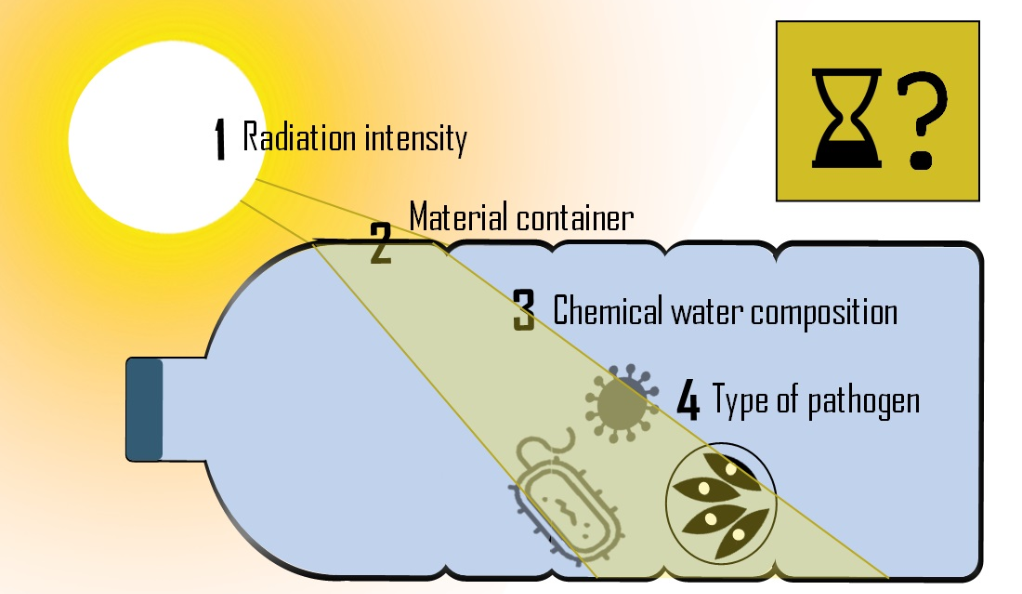Introduction to Solar Power Water Purification
In the face of a growing global water crisis, where billions lack access to clean water and environmental challenges are intensifying, solar power water purification emerges as a crucial and sustainable solution. Harnessing the abundant and renewable energy from the sun, this technology offers an environmentally friendly alternative to traditional water purification methods that often rely on electricity and chemicals. Notable innovations, such as the Solar Absorber Gel developed by Princeton University, demonstrate the efficiency of using solar power to purify even heavily contaminated water.
This approach not only provides a practical solution for remote areas with limited electricity but also aligns with global sustainability goals, marking a significant stride towards ensuring clean water access and environmental conservation. This introduction is the gateway to a deeper exploration of the transformative potential and diverse applications of solar-powered water purification technologies.
Innovative Technologies in Solar Water Purification
The realm of solar water purification is witnessing a surge of innovative technologies, each aiming to make the process more efficient, cost-effective, and accessible. These advancements are crucial in addressing the diverse challenges posed by different water sources and environmental conditions.

1. Solar Absorber Gel Technology
One of the most notable innovations in this field is the Solar Absorber Gel technology developed by researchers at Princeton University. This technology is inspired by the unique ability of pufferfish to absorb and release water. The gel absorbs water at room temperature and, upon heating, releases purified water. This process is facilitated by a layer of polydopamine, which converts solar energy into heat, enabling the device to function effectively in various outdoor temperatures. Another layer of alginate assists in filtering out harmful substances, including metals, pathogens, and chemicals. The most significant advantage of this technology is its passive, gravity-based filtration system, which requires no external energy source other than sunlight, making it an ideal solution for remote areas.
2. Solar-Powered Membrane-Based Systems
Membrane-based technologies are another frontier in solar-powered water purification. These systems, such as solar-powered reverse osmosis (SPRO), forward osmosis (SPFO), electrodialysis (SPED), and hybrid membrane systems (SPHMS), offer varied solutions for water purification. Each technology has its unique mechanism and suitability for different water types. For instance, SPRO is widely used for its efficiency in removing a broad range of contaminants, while SPFO excels in low-energy consumption and minimal fouling issues.
| Technology | Key Features | Ideal Application |
|---|---|---|
| Solar-Powered Reverse Osmosis (SPRO) | Efficient contaminant removal | Saline or brackish water |
| Solar-Powered Forward Osmosis (SPFO) | Low energy consumption, minimal fouling | Various water sources including wastewater |
| Solar-Powered Electrodialysis (SPED) | Effective in ion removal | Brackish water |
| Solar-Powered Hybrid Membrane System (SPHMS) | Combines multiple processes for enhanced purification | Diverse water sources |
3. Solar Water Disinfection Systems (SODIS)
SODIS is a simple yet effective method, particularly useful in disinfecting small quantities of water with low turbidity. It involves exposing water-filled plastic bottles to sunlight for several hours. The UV radiation from the sun kills pathogens, making the water safe to drink. This method is highly accessible due to its low cost and ease of implementation.
4. Advanced Configurations
Researchers are continually exploring new configurations to enhance the efficiency of solar water purification systems. These include designs like parabolic dishes and heating coils that optimize the capture and utilization of solar energy. The parabolic dish configuration, for instance, focuses sunlight onto a specific point to maximize heat generation, which is then used to purify water. Similarly, heating coils can be integrated into systems to retain and store heat, ensuring consistent water purification even in varying sunlight conditions.
Solar-Powered Membrane-Based Purification Systems
The integration of solar energy with membrane-based purification technologies has been a significant development in the field of water treatment. These systems leverage the efficiency of solar power to drive various purification processes, making them not only environmentally friendly but also adaptable to different water quality challenges.
Understanding Membrane-Based Technologies
Membrane-based water purification systems employ a barrier, typically a semi-permeable membrane, to separate unwanted substances from water. These technologies are distinguished by their mechanism of action and the type of contaminants they target.
- Solar-Powered Reverse Osmosis (SPRO): SPRO uses a high-pressure pump powered by solar energy to push water through a semi-permeable membrane, effectively removing a wide range of contaminants including salts, bacteria, and viruses. Its popularity stems from its ability to treat saline or brackish water, making it suitable for desalination processes.
- Solar-Powered Forward Osmosis (SPFO): In SPFO, the osmotic pressure difference across the membrane drives the purification process. This method is known for low energy consumption and minimal fouling, making it ideal for treating various water sources, including wastewater.
- Solar-Powered Electrodialysis (SPED): This technique is especially effective in removing ions from brackish water. It uses an electric potential, which can be solar-generated, to move ions through selective membranes, thereby desalinating the water.
- Solar-Powered Hybrid Membrane System (SPHMS): SPHMS combines multiple processes, such as reverse osmosis and ultrafiltration, to enhance purification efficiency. This system is adaptable to diverse water sources and contamination levels.
Advantages of Solar-Powered Membrane Systems
- Energy Efficiency: By harnessing solar energy, these systems significantly reduce reliance on conventional power sources, leading to lower operational costs and environmental impact.
- Flexibility and Scalability: They can be tailored to suit various applications, from small, portable units for individual use to larger, community-scale systems.
- Quality of Output: These systems are capable of producing high-quality water, meeting stringent safety standards.
Sustainable and Economical Aspects of Solar Power Water Purification
Solar power water purification is not just a technological marvel; it is also a beacon of sustainability and economic viability. The integration of solar energy into water purification processes offers a dual advantage – environmental conservation and cost-effectiveness.

Environmental Sustainability
- Reduction of Carbon Footprint: Solar-powered systems significantly lower greenhouse gas emissions compared to conventional water purification methods that rely on fossil fuels. By using renewable solar energy, these systems contribute to the global effort of reducing the carbon footprint.
- Resource Conservation: These systems reduce the dependence on non-renewable energy sources and chemical treatments, thus conserving natural resources. Additionally, solar power water purification technologies often use fewer chemicals, minimizing the risk of environmental contamination.
- Adaptability to Climate Change: As climate change impacts freshwater sources, solar-powered purification systems provide a resilient alternative that can operate independently of the electrical grid and fluctuating fuel prices.
Economic Viability
- Lower Operational Costs: After the initial investment in solar panels and system setup, the operational costs of solar-powered purification systems are significantly lower than traditional systems. The primary energy source, sunlight, is free, leading to substantial savings in energy expenses.
- Long-term Cost Benefits: Although the upfront costs of solar-powered systems can be higher, the long-term benefits outweigh these initial expenses. Reduced energy bills, minimal maintenance, and the longevity of solar panels contribute to overall cost-effectiveness.
- Scalability and Versatility: Solar-powered systems can be scaled to fit various needs, from small, portable units for individual households to larger installations for community use. This scalability makes them a versatile option for diverse settings and budgets.
Solar Water Disinfection Systems (SODIS)
Solar Water Disinfection (SODIS) represents one of the simplest, yet effective, technologies in the domain of solar-powered water purification. This method is especially critical in areas where access to clean water is a challenge, and conventional purification methods are either unavailable or unaffordable.

The Process of SODIS
SODIS utilizes ultraviolet (UV) light from the sun to disinfect water. The process involves filling clear plastic or glass bottles with water and exposing them to direct sunlight for a specific period, typically around 6 hours under strong sunlight conditions or two consecutive days under less intense sunlight. The UV radiation effectively inactivates microorganisms in the water, including bacteria, viruses, and protozoa, rendering the water safe for consumption.
Effectiveness and Limitations
- Effectiveness: Studies have shown that SODIS can significantly reduce the concentration of pathogenic organisms in water, making it a practical solution for improving drinking water quality. It is particularly effective against diarrheal diseases, a common health issue linked to water quality.
- Limitations: The effectiveness of SODIS is dependent on several factors, including the intensity of sunlight, the duration of exposure, and the clarity of the water. Turbid water with high levels of suspended particles can hinder the UV penetration, reducing the efficacy of the process. Also, SODIS does not remove chemical contaminants.
Design and Development of Solar Purification Systems
The design and development of solar purification systems involve a comprehensive approach, balancing technological innovation with practical application. These systems are designed to maximize the use of solar energy in purifying water, considering various factors such as efficiency, cost, adaptability, and environmental impact.
Key Design Considerations
- Maximizing Solar Energy Utilization: The primary focus is on optimizing the capture and conversion of solar energy. This involves selecting materials with high solar absorbance, designing the system layout to maximize sun exposure, and integrating technologies like photovoltaic cells or solar collectors.
- Efficiency of Water Purification: The system must effectively purify water to safe drinking standards. This involves choosing the appropriate purification technology (e.g., membrane filtration, distillation) based on the water source and contamination level.
- Scalability and Adaptability: The design should cater to varying scales, from small portable units for individual use to larger systems for community supply. Additionally, systems should be adaptable to different environmental conditions and water sources.
- Cost-Effectiveness: Balancing the initial investment in solar technology with long-term operational savings is crucial. The goal is to make the system affordable and accessible, especially for communities in developing regions.
- Durability and Maintenance: Materials and components should be chosen for longevity and resistance to environmental wear. Ease of maintenance is also a critical aspect, ensuring the system remains functional with minimal technical support.
Innovative Configurations
- Parabolic Dish Systems: These systems use a parabolic mirror to focus sunlight onto a specific point, usually a boiler or heat exchanger, increasing the efficiency of heat-based purification methods like distillation.
- Photovoltaic-Powered Filtration: Combining photovoltaic panels with membrane filtration technologies like reverse osmosis, this configuration uses solar energy to power the filtration process directly.
- Hybrid Systems: These systems integrate multiple purification technologies, such as combining solar distillation with UV disinfection, to broaden the range of treatable water qualities and increase overall efficiency.
Conclusion
The exploration of solar power in water purification unfolds a narrative of innovation, sustainability, and hope. This journey through various technologies, from the simplicity of SODIS to the complexity of solar-powered membrane systems, underscores the potential of harnessing solar energy for addressing one of humanity’s most pressing needs – access to clean water. As these technologies evolve, they offer not just a solution to the water crisis, but a blueprint for a future where environmental stewardship and technological advancement go hand in hand. The continued development and adoption of these systems stand as a testament to human ingenuity and a commitment to sustainable living, promising a brighter, cleaner future for all.
